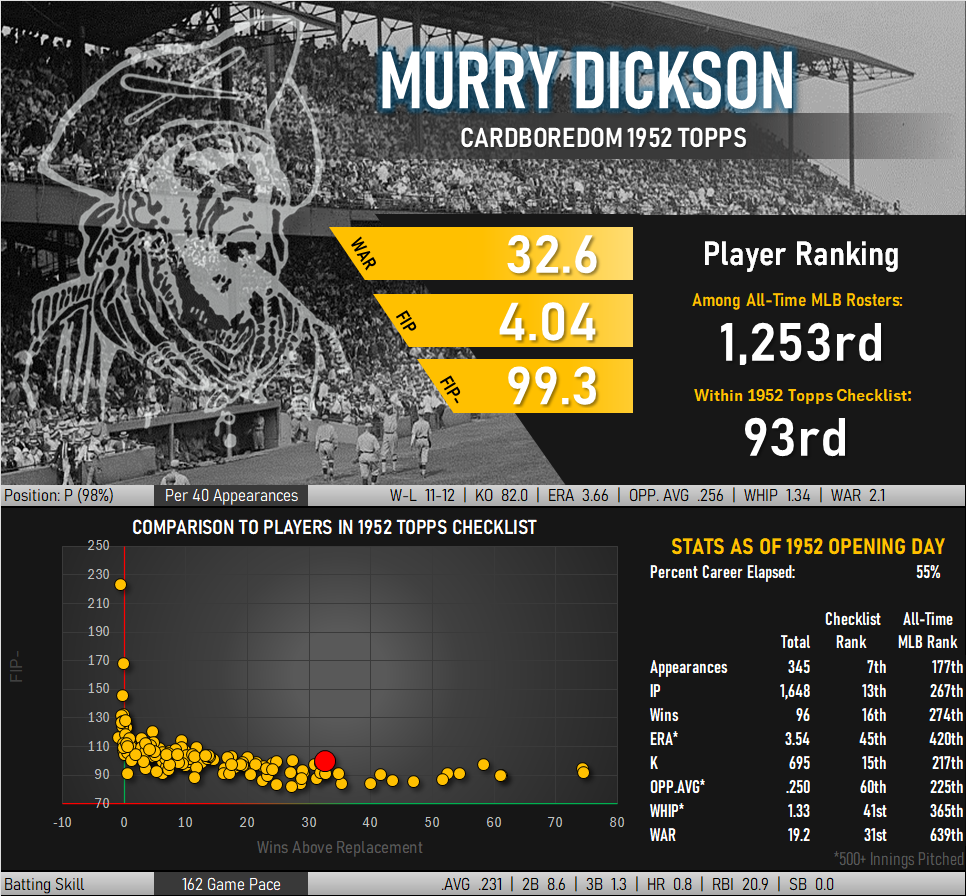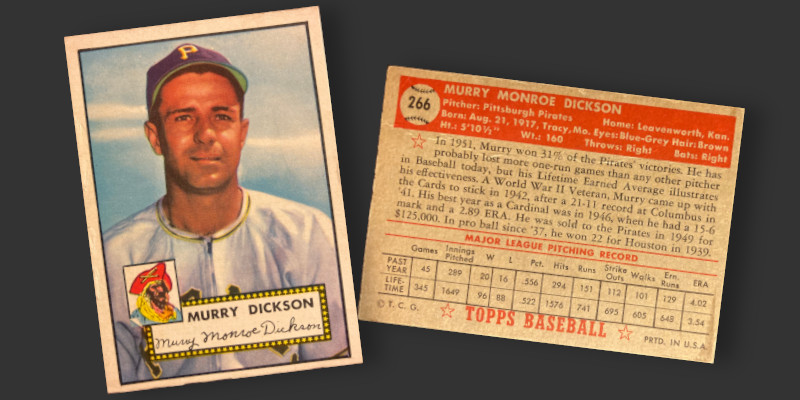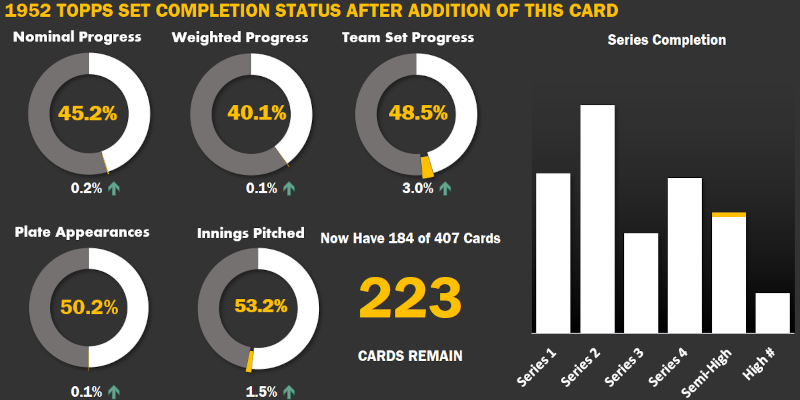Distraction and sleight of hand work together to create successful performances of magic tricks. Murry Dickson was a master of both and employed these skills to create one of the most steady pitching performances of a career that reached into parts of three decades. This story has it all, from card tricks and baseballs that seemingly pass through opposing bats to vanishing bank robbers and an arm that made Father Time a liar.
To begin the story of Murry Dickson, one must first recognize that magic is not a metaphor. Dickson really practiced close-up magic tricks and would frequently entertain other players. Card tricks, vanishing coins, and secretly lifting watches from viewers’ wrists were common elements of his act.
He tricked baseball teams into thinking he was a year younger than he actually was, telling them he was born in 1917 rather than 1916. This did not seem to matter, as Dickson’s durability seemed to improve as he aged. He gave his clubs at least 200 consistent innings every year for a decade from age 31-40. Batters couldn’t get a read on him, as he experimented with pitches, grips, and deliveries throughout his career. He even added the mercurial knuckleball to his capabilities in the 1950s.
His name is often tossed in among the ranks of pitchers who regularly employed illegal spitballs in their repertoire, though there is no record of him getting caught in the act. Of course, catching a master of sleight of hand at work is exceedingly tough to begin with and even more difficult at a distance of 60 feet 6 inches. In recognition of just how difficult it can be to catch a talented magician, the CIA began teaching magic performance tradecraft to recruits in the 1950s. There is even ongoing debate into how involved Harry Houdini had been in gathering information (and escaping with it) in his international work earlier in the century.

Dickson’s career 172-181 win/loss record looks deceiving at first glance. “That can’t be right,” is the first thought that comes to mind, but there it is. When researching this player I thought he was perhaps the victim of poor run support, as he was played a significant stretch of time with the lowly Pittsburgh Pirates and his 1952 baseball card states “he has probably lost more one-run games than any other pitcher in baseball today.” Upon closer inspection, it turned out that almost all of the teams Dickson played for had above average run production in those seasons. He had better than average fielding independent pitching skills, but only moderately so (FIP- of 99 and ERA+ of 109). His red dot appears in the performance chart above well on its way to distancing itself from the pack.
Dickson, it turns out, was a compiler. Those that have read my 400+ posts to date have probably surmised that I do not view this as a negative term. Dickson’s superpower was an ability to reinvent himself while providing consistency to teams that sorely needed it. The flexibility he gave teams in assembling their roster probably made him more valuable than his pitching stats suggest.
The Jail Break
Dickson’s most newsworthy pitching performance came before he signed a Major League contract. As a teenager in 1933 he was on the mound for an exhibition game with an American Legion team. The game was being held inside the grounds of a Kansas State Prison in Lansing. Most of the prisoners were watching the game, while a group of 7-10 inmates executed a well-planned escape. The group had been recipients of smuggled pistols and quietly took the warden hostage. They made their way unobserved into a guard tower situated along an outer wall. Taking two guards prisoner, they shinnied down the wall with rope constructed in the prison’s shop facility.
The armed group successfully evaded initial attempts at capture and coalesced around Wilbur “Mad Dog” Underhill and Harvey Bailey, a pair of hardened bank robbers. Bailey had infamously stolen $2.7 million in a bank robbery three years earlier, a heist that would stand as the largest for several decades. Bailey was later captured during the arrest of Machine Gun Kelly and apparently wrongly convicted of being part of a Kelly-affiliated kidnapping of a businessman. Underhill, for his part, already had a long history of incredibly violent robberies and several murders. He led the newly constituted gang on a nine month crime spree that ended with his death in a shootout with the FBI.
1952 Topps
Murry Dickson joined my ’52 Topps set at the same time I purchased the Chuck Diering card I wrote about last week. Like the previous card, this one looks fantastic at first glance. While the Diering had some paper loss on the front, this card has a wrinkle running the length of the card just below the red text box on the back. It is only visible on the back, leaving this one of the more visually appealing cards in the collection.










